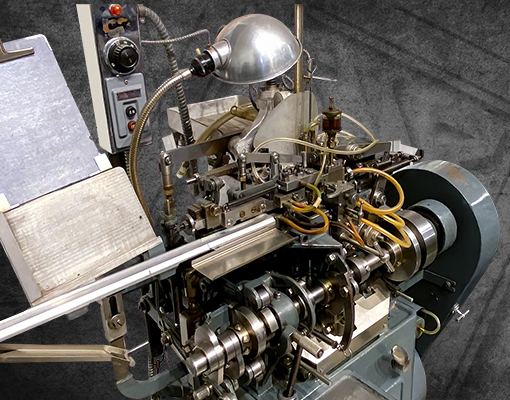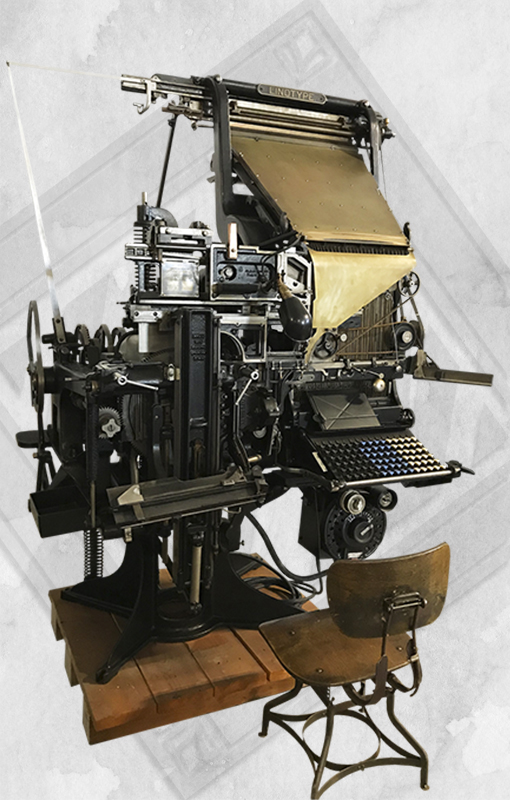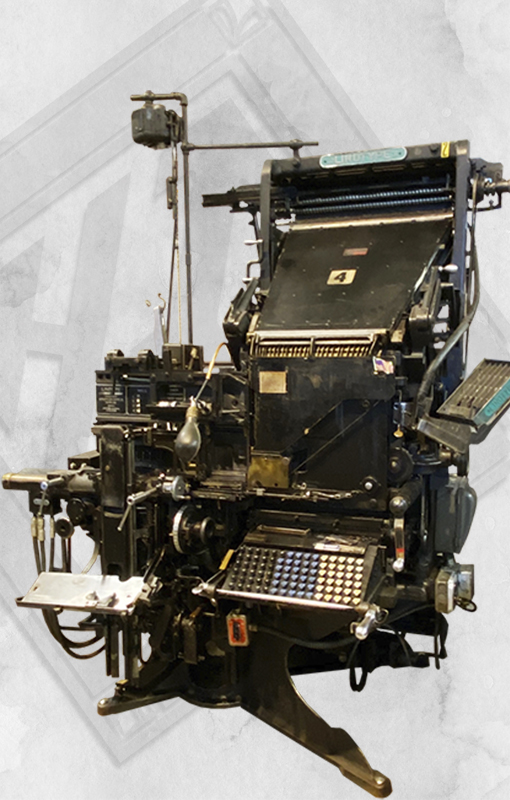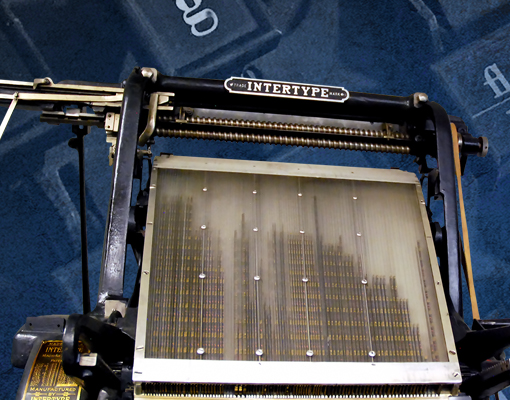With thanks to both Bi Sheng and Johannes Gutenberg, we were blessed with finally being able to distribute knowledge on a worldwide scale. Typesetting, the definition of forming words that can be reproduced over and over again, had its next renaissance with Ottmar Mergenthaler and his incredible Linotype.
In 1884, Mergenthaler, a German who had moved to America, invented what would become the key invention and technology well into the late 1960s.
One year after Mergenthaler, in 1885, American Tolbert Lanston patented his Monotype, which also gained favour on both sides of the Atlantic.
Finally, the 3rd member of the triumvirate, Intertype, began production of a device very similar to the Linotype in 1911. These three companies formed the basis for hot metal type composing and assembly. All three were developed in America.
Wood type for large font sizes was also necessary for the printer. The original wood type was made from solid wood. J. Edward Hamilton started his J.E. Hamilton Holly Wood Type Co. in 1880. From Two Rivers, Wisconsin, Hamilton became the largest manufacturer of wood type and composed stones, cabinets and cases for the printing industry.
Hundreds of foundries popped up throughout America and Europe - some legendary even today. Out of these came an explosion of new type designs. The once mammoth American Type Founders (ATF) resulted from consolidation amongst foundries in places like Cincinnati, Chicago, New York and St. Louis.
Type was a huge business whether cast as a line or individual letters. Designs were mostly proprietary, which led to constant new designs. Once phototypesetting came into its own in the early 1970s, the once mighty type foundry and machinery builders lost their monopoly and virtually vanished.
GO TO THE GALLERY »



